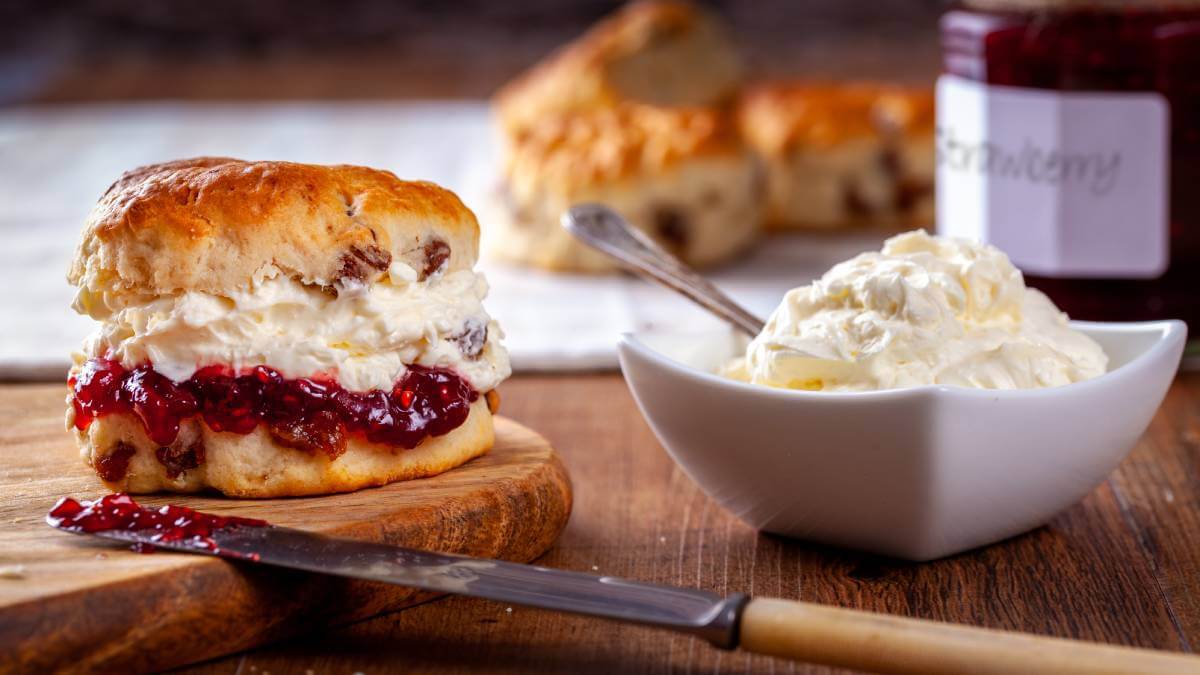What’s your scone-making ability?
People tend to fall into two groups: those who make light and fluffy scones that can make a CWA life member weep and those who make scones that are really rocks in flour form.
Which one are you?
If you are the first, good for you, and can I come to your house soon? If you are the second, well, don’t give up, improvements can always be made.
Here’s our guide to upping your scone game.
First of all, we are only talking about traditional scones here. Lemonade scones are great, but let’s stick to the classics.
Back to basics
There are a few things to get right before you pop your scones in the oven.
If you are a beginner scone maker don’t go off-piste. Stick to the recipe until you know what you are doing. There is plenty of time to add bacon or chocolate chunks once you have mastered the original.
The whole point of scones is to make them light and fluffy. No-one anywhere ever said: “Gee, I wish these scones were more dense.”
So, you have to start off right, and that means sifting the flour. Do it once, do it twice. This aerates the flour to avoid lumps at the mixing stage.
You need to keep the butter as cold as possible. Only use the tips of your fingers to rub it into the flour or use a food processor to mix it in. If at all possible, keep the mixing bowl chilled as well. Maybe that’s a tip best left for overachievers.
The butter and flour mix should resemble really fine breadcrumbs when you are finished, i.e. no lumps of pure butter. If you are not sure, vigorously tap and shake the bowl. Any unmixed lumps of butter should rise to the surface.
I know not of what sorcery makes this happen, it just happens.
Keep it cold
You need cold butter, because melted or warm butter will make the mixture ‘gluggy’ for want of a better word, and no fluffy scones will be made.
So you’ve combined the butter and flour, now it’s time to mix in the milk.
Make a well in the centre, add the milk and use a cutting action with a knife to mix it up as much as you can, once again, to keep that butter cool.
Now it’s time to knead it together. For the love of all that is holy, don’t overwork the dough. Combine it until it is just mixed and then tip it out onto a lightly floured flat surface.
Don’t panic if it’s not like bread dough, i.e. relatively dry. Scone dough should stick a bit to your hands.
For this reason, it’s also vital that you keep your working area lightly floured, you don’t want to pick up any more flour during the shaping stage.
Traditionally, scones were rolled out, but there is an increasingly popular school of thought that encourages just sort of patting it into shape using the heel of your hand.
Cut the scones out using a cutter. Dip it into water between cutting if it’s sticking.
Shape it up
A proper cutter is good and makes it look like you know what you are doing, but an about-right-sized glass does just as well.
Another method is to simply cut a round shape into wedges. This has visual appeal, but the pointy end often falls apart when eating and you can’t pile as much cream and jam on.
There are two schools of thought as to scone placement on the baking tray. The first gives them plenty of room to rise and the second is placing them relatively close together to keep the sides soft.
I go for the first method, but I can see the appeal of soft sides too.
Brush with a little milk if you like a crispy top or a little flour if you like a floury top.
And, hey presto, in about 10 minutes in a 220°C oven you should have scones. Serve immediately; there is no joy in day-old scones.
And remember, when all else fails jam and cream will cover a lot of mistakes.
What’s your best scone-making tip? Why not share your knowledge in the comments section below?
Also read: Cinnamon and Date Scones


Sounds good, but you haven’t given quantities. And, whereas the CWA recipes uses cream and milk, your method suggests butter and milk. Pros and cons?
I’ve never been impressed with CWA scones, small and stodgy at their annual sale at the market. Maybe butter is the trick to light and fluffy but all the recipes I have never use butter, only thick cream and lemonade. The only recipe using butter is the recipe for air fryer scones but it doesn’t go on about keeping it so cool. Check out Scones by Miguel Mastre he uses baking powder and icing sugar in the mix.